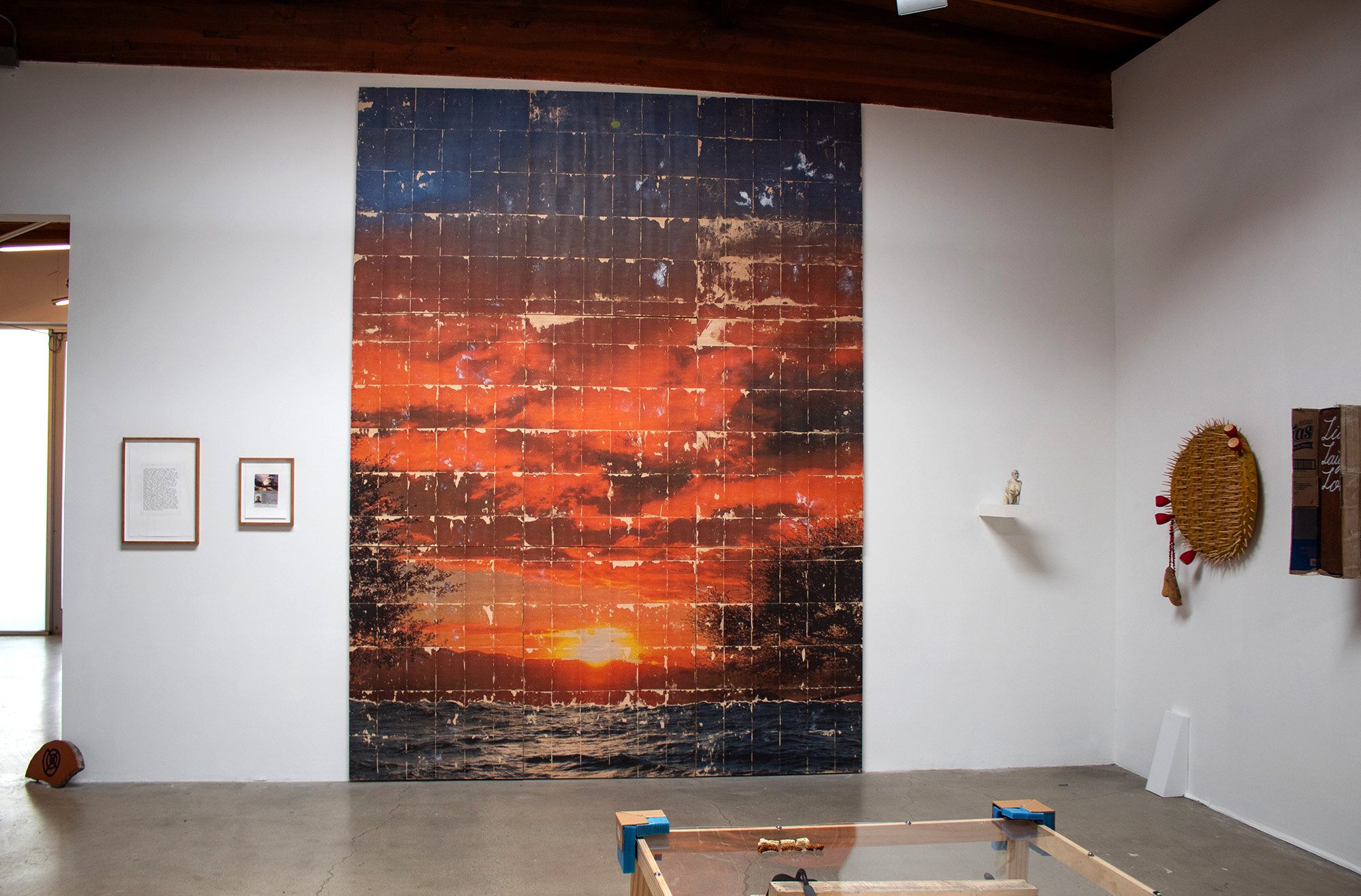Honor Fraser is pleased to present We Are They: Glitch Ecology and the Thickness of Now, a group exhibition that charts the blurry boundaries between human networks, ecological systems, and the technologies that give form to our so-called “man-made” geological epoch. A love letter to a world in revolt, and to those who join in solidarity with our planet’s outrage, the exhibition features twenty-two artists who trouble enshrined notions of anthropocentrism while navigating the social, spiritual, and technological margins of the ecosystems they operate within. Curated by gallery director Jamison Edgar, We Are They traces “the glitch” across digital, environmental, and philosophical habitats—deepening ongoing debates regarding human/animal consciousness, globalization, migration, resource extraction, and Artificial Intelligence (AI). An opening reception will be held on Friday, June 16 from 6pm to 8pm.
The exhibition’s title borrows language from Donna Haraway’s “A Cyborg Manifesto” and weaves her now infamous theories of human/machine entanglement within a cosmology of Indigenous, queer/trans, Black feminist, and more-than-human knowledge practices. “The glitch,” which is frequently evoked to imply an unexpected error in the professions of computer science, computation, and engineering, first gained mass popularity during the 1960’s space race, when physicists and federal administrators were reckoning with the science-fueled fantasies of separating human beings from the Earth’s orbit. The exhibition accentuates these extraterrestrial origins but forgoes glitch’s colloquial comparisons with error to amass a roster of artists who instead glitch to subvert and decenter human ego within social and ecological hierarchies.
Colloquially, like the scientists at NASA, many today use the word glitch to articulate a hiccup in a digital system or a temporary breakdown in that system’s visual interface, but the word’s Proto-Germanic roots do not in fact imply a rupture. The word glidan, from which we derive glitch instead signifies a slipperiness—the smooth action of gliding. In her 2020 manifesto Glitch Feminism, the curator and arts writer Legacy Russell considers the utility of this gliding-glitching for a generation of queer and POC artists who came of age online and AFK (Away From Keyboard). Honoring Russell’s research, We Are They asks how these same gliding-glitching choreographies play out on a planetary scale. In turn, “glitch ecology” is championed as a subversive tool for clandestine self-expression, as well as a catalyst for coalition building between non-human species and more-than-human forces.
At Honor Fraser, the exhibition unfolds across multiple rooms and is designed to continuously reconfigure audiences’ scenes of scale, visual perception, and physical orientation. Visitors are greeted by the Second Life avatars of Skawennati’s machinima (machine cinemas) Words Before All Else and the techno-material incantations of Mimi Ọnụọha’ and Star Feliz. In the exhibition’s largest gallery three monumental wall works by Don Edler, Esteban Ramón Pérez, and Cole Sternberg render the glitch in mammoth bones, weathered sunsets, and leathered star-spangled banners. Surrounding these curatorial anchors are groupings of paintings, prints, sculptures, and wall-mounted video essays. Tabita Rezaire, Blair Simmons, and Chris Velez accentuate the fleshy utility of our digital devices—offering forking paths towards advanced, technologically inflected consciousness. Molly Greene’s, Marianne Hoffmeister’s, and Alex Jackson’s non-human subjects trouble the human gaze and refract the strange face of so-called objective truth and scientific knowledge. Ánima Correa, Mark Dorf, Jordan Loeppky-Kolesnik, and Alice Bucknell expand upon these themes to map the technological residues of the human infrastructure that connects precarious ecosystems. Raul De Lara, Cielo Saucedo, and Ruben Ulises Rodriguez Montoya locate the glitch at and across artificial borders where labor, mobility, and climate are woven into a mosaic of Indigenous and emerging technologies. In the gallery’s back screening room, Andro Eradze’s haunting contribution to the 2022 Venice Biennale, Raised in the Dust, illuminates flashes of interspecies avatars in flesh, fire, and fur. Together these visual practitioners uproot and remineralize the glitch for an era of worsening environmental and political crises.
Exhibiting artists: Alice Bucknell, Ánima Correa, Mark Dorf, Don Edler, Andro Eradze, Star Feliz, Molly Greene, Donna J. Haraway, Marianne Hoffmeister, Alex Jackson, Aaron Elvis Jupin, Jordan Loeppky- Kolesnik, Raul De Lara, Ruben Ulises Rodriguez Montoya, Mimi Ọnụọha, Esteban Ramon Perez, Tabita Rezaire, Cielo Saucedo, Blair Simmons, Skawennati, Cole Sternberg, Chris Velez
Curated by: Jamison Edgar




